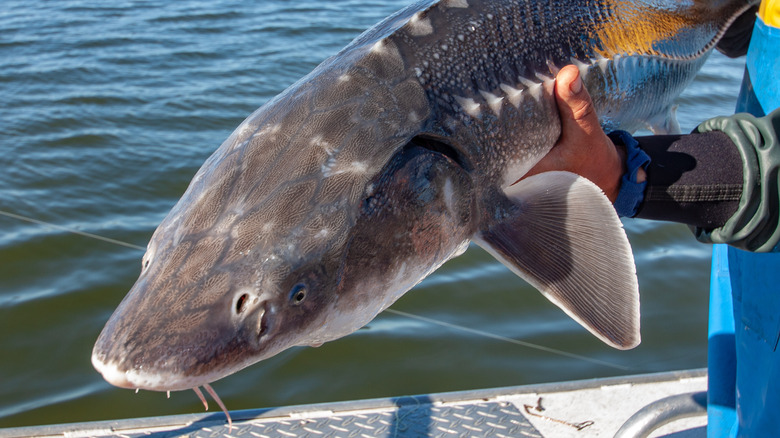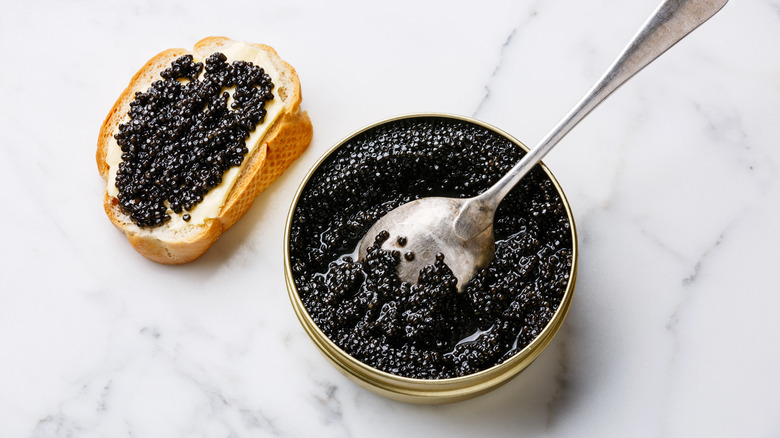What Makes Idaho's Sturgeon Special
Sturgeon is a family of fishes containing nearly 30 species, which, according to Encyclopedia Britannica, are all native to waters of the Northern Hemisphere. You may be familiar with them via the caviar they produce or perhaps you've already heard of their nickname: Albany Beef. Although sturgeons serve these modern uses, they are in some ways creatures of ancient history. The first sturgeons evolved roughly 400 million years before modern times. These fishes are indeed relics of an earlier age, but there's nothing wrong with antiques.
Sturgeon lay tiny, sticky eggs in large quantities, which is great for caviar producers. Per House of Caviar and Fine Foods, sturgeon caviar tastes herby, salty, and yolky. It also smells fresh and sweet. This pairs well with something plain like blini or toast, but you can also eat it plain, pressing the grains against your mouth's roof to get the fullest flavor.
Their meat is also prized by people who enjoy seafood. As noted by Chefs Resources, the different types of sturgeon can have varying flavors. In general, wild sturgeon tastes earthy, while farmed sturgeon can be delicate and mild in flavor. Overall, though, the common trait in all sturgeon is its firmness. Cooking methods for the fish include broiling, grilling, sauteing, and smoking.
Sturgeons are as versatile as they are numerous. With so many different species, though, how does one variety stand out? How do you make a name for yourself when you're related to different species all over the Northern Hemisphere?
Largest North American freshwater fish
Per Idaho Fish and Game, white sturgeon live in Idaho's Kootenai, Lower Salmon, and Snake rivers. Those are big rivers, and white sturgeons are a large species. In fact, they are North America's biggest freshwater fish. Some as heavy as 1,500 lb. have been reeled in. A record-breaking 10' 3" sturgeon was caught in 2022, as reported by USA Today. This happened at C.J. Strike Reservoir, Idaho, which is one of the better places to fish for them, according to Jones Sport Fishing. Still, it's important to note that white sturgeon are protected in the Gem State, so catch-and-release is a must. In the 20th century, the damming of the Snake River caused the white sturgeon's prey populations to significantly decrease. Meanwhile, white sturgeon became limited in where they could go. Yet anglers continued to catch them unabatedly. As a result, the species is considered endangered by the U.S. Fish & Wildlife Service.
So is white sturgeon off the menu? Not entirely. As explained by Fish Breeders of Idaho, farmed specimens are now responsible for white sturgeon caviar and meat. Like in the case of most farmed sturgeon species, the flesh of the captive white variety is less pronounced in flavor than its wild counterpart (via Seafood Source). Their large, firm, dark eggs are marketed as creamy and pure by companies like Browne Trading. White sturgeon is a huge freshwater fish species, and it seems its culinary potential is just as big.

